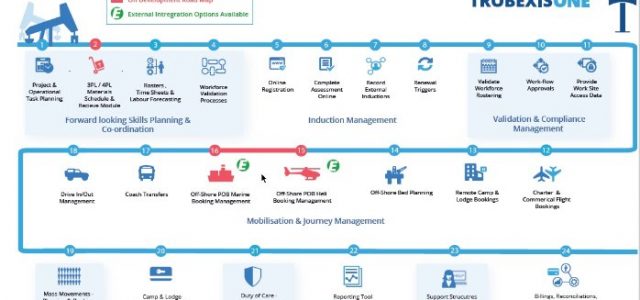There are a range of conceptual pairs that I have found to be important to understand and consider when architecting enterprises. Each of these pairs constitute a duality where change of one encompasses or allows change to the other.
Understanding both dimensions of each of these dualities is essential to the successful architecting and design of enterprises. Equally, changing one without appreciating the other is changing can be fraught with danger! The pairs that come to mind include:
- Self and other
- Enterprise and organisation
- Internal and external
- Information and process
- Means and ends
- Capability and outcome
- Autonomy and control
Self and other
I have listed this first because people are intrinsic to all enterprises. People conceive and pursue enterprises. Many enterprises entail collaboration with others, engaging them in the ongoing conception and pursuit of the enterprise.
From the outset of our lives, we engage in a process of understanding ourselves. The concept of “self” unavoidably entails the concept of “other” – to define “self”, we must be able to differentiate “self” from “other”. Consider the development of a child, coming to understand themselves as separate and distinct from:
- their mother and father
- the world or environment in which they live
Our understanding of ourselves is as much informed by our understanding of others, and vice versa. We communicate with others and that communication changes them. They communicate with us and that changes us.
As we collaborate with others in conceiving and pursuing enterprises, we engage in developing a shared conception of our enterprise and the manner in which we pursue it. We share our conception and others conception may be challenged, reinforced and possibly changed. They share their conception and the same may occur.
The models that we develop as part of conceiving and pursuing our collaborative enterprise inevitably entail ongoing changes to self and to others. In my experience, they are more successfully conceived and pursued when I give due attention to the manner in which others can and do contribute to the enterprise.
This duality prompts consideration of numerous dimensions, far more than can be covered in this article, providing an valuable source of topics for future articles, including:
- leadership
- emotional intelligence
- enterprise awareness
Enterprise and organisation
“Enterprise” has a number of different meanings. Often it is used as a synonym for organisation, as in:
- enterprise-bargaining and organisation-wide-bargaining
- enterprise-agreement and organisation-wide-agreement
- enterprise-development and organisational-development
- our-enterprise and our-organisation
In architecting enterprises, it is helpful to bring a different meaning into play – as outlined by Len Fehskens when I encountered him through LinkedIn and more recently through the Association of Enterprise Architects and their journal, of which he is Chief Editor. Len encourages us to consider
enterprise as an undertaking or endeavour
In doing so, it is then possible to make a clearer distinction between the organisation that we establish to pursue the undertaking or endeavour and the undertaking or endeavour itself. It also enables us to apply the concept of enterprise in a range of different ways that are not tied to the scope of an organisation, including:
- a new product or service as an endeavour
- a multi-organisation endeavour
- a project as an endeavour
Each time the conception of the endeavour changes, there will be a necessary change to the organisation established to pursue the endeavour. Each time the organisation is changed, we create the capability and opportunity to pursue different endeavours.
Internal and external
This is a more general version of self and other, but applied to any entity or system. As we create and define the boundary which “defines” the entity or system, so
the boundary creates the distinctions of internal to the boundary and external to the boundary
If we change what we regard as internal, then we are changing what we regard as external. If something changes externally, then this may cause us to change something internally.
For some enterprises, their ultimate failure has arisen through a failure to recognise the external changes that have been impacting their enterprise as each enterprise responds to external needs by making internally developed offers.
Information and process
This is probably the earliest “pair” that I encountered, as part of my role as a business analyst.
For any process, it is possible to identify:
- the information consumed by the process
- the information generated by the process
For any information, it is possible to identify:
- the generating process
- the consuming process
Hence, the view that one does not exist without the other. This has provided the basis for reviewing and assuring the quality of business requirements documents, checking that there are identified processes for the information requirements, and that there are identified information domains and entities for the process requirements.
Means and ends
This is a well known pair that comes in a variety of forms:
- means and ends
- strategies and objectives
- how and why
They can exist in a cascade where:
- Strategy A is pursued to realise objective 1
- Objective 2 reflects Strategy A
- Strategy B is pursued to realise objective 2
These elements may be used to explore:
- business objectives and business strategies
- program objectives and program strategies
- project objectives and project strategies
- system objectives and system strategies
Change the objectives and it is necessary to change the strategies. Change the strategies and different objectives may be realised.
Capability and outcome
Whenever a different outcome is required, there is a need to determine whether that demands new or different capabilities. Whenever a different capability is available, there is the opportunity to realise new of different outcomes.
There are several modeling techniques which enable effective exploration of this particular duality:
- Benefit realisation chains aid in understanding the chain of outcomes that are required in order to realise ultimate enterprise goals and outcomes. Once developed, it is helpful to explore the capabilities required to deliver each benefit / outcome in the chain
- Business capability models aid in reflecting the capabilities existing within an enterprise or required to pursue an intended enterprise. Once developed, it is helpful to explore the gaps in capability to inform a change or transformation program, and to articulate the outcome measures for each capability which aids in evaluating progress and degree of success.
Autonomy and control
Consideration of autonomy versus control arises in a range of situations, most commonly in relation to:
- Governance
- Management
- Process
In a governance context, there is a recognition of the separation between the governing body and management. Governance creates an environment through articulation of strategy and policy within which management are expected to operate. Strategy and policy which are too prescriptive limit the capacity of management to respond the dynamic nature of the environment in which the enterprise operates. Alternately, ill-defined strategy and policy may offer a degree of autonomy such that management pursue outcomes beyond those identified by the governing body.
In a management context, managers and staff reporting to a manager will give consideration to the degree to which the manager controls staff or empower staff and affords them a degree of autonomy. Staff with little autonomy will often speak of being micro-managed, implying a degree of control beyond that which they deem necessary.
In a process context, consideration needs to be given to the conditions within which the process operates and the extent to which these can be accommodated by a process which prescribes what should be done versus a process which relies on the knowledge and skill of staff to determine what should be done.
In each context, increasing autonomy entails decreasing control and vice versa. Careful attention is required to determining the appropriate balance between autonomy and control.
Conclusion
Each of these dualities are important to the successful architecting, operation and sustaining of enterprises.
Perhaps there are other dualities of which you are conscious and which you find important to consider?
Article by channel:
Everything you need to know about Digital Transformation
The best articles, news and events direct to your inbox
Read more articles tagged: Featured, Operating Model







